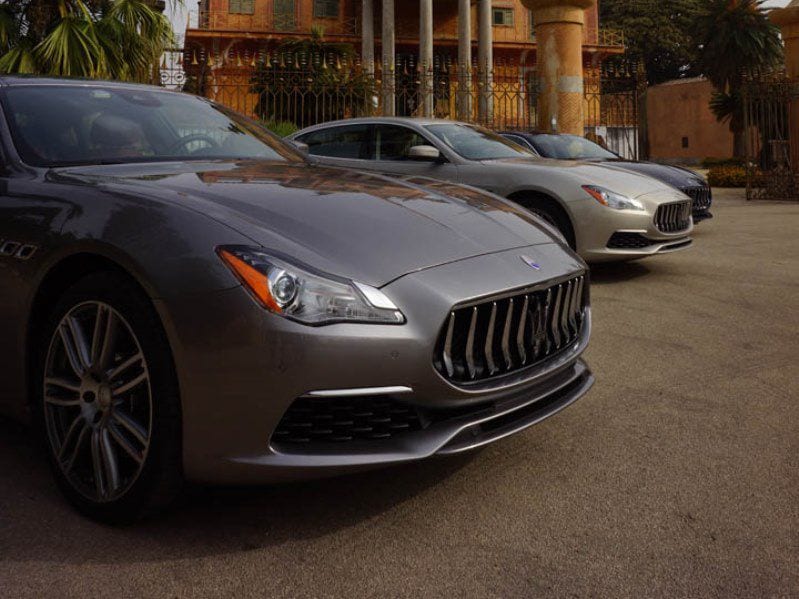Recent Articles
Popular Makes
Body Types
2017 Maserati Quattroporte Review
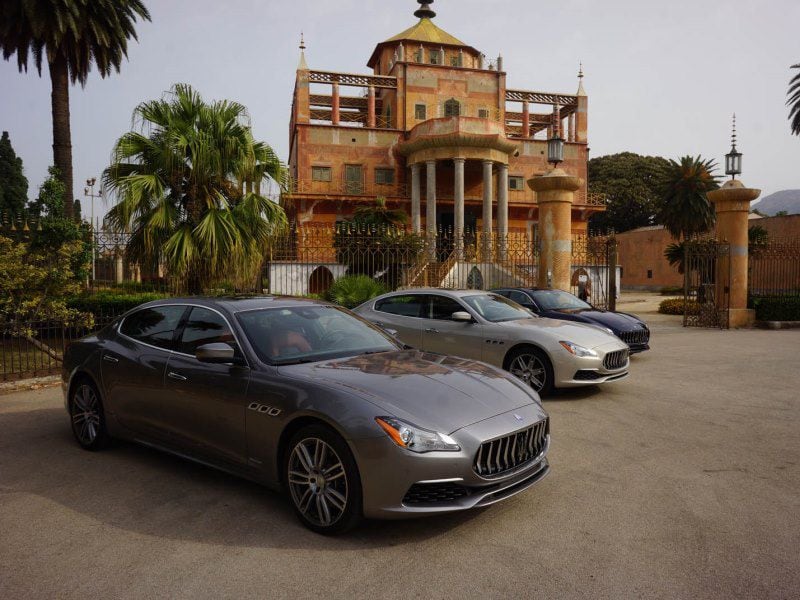
2017 Maserati Quattroporte 010
Maserati updated its flagship Quattroporte sedan freshly for 2017, adding some technological gadgetry, updating the sheet metal, and introducing a couple of new trim levels that emphasize either luxury or sportiness.
The driver-focused luxury sedan is one of three vehicles from Maserati that will be spearheading the venerable performance brand into the future. Although offerings in volume-selling segments will be the Levante SUV and entry-level Ghibli, the flagship Quattroporte takes its place as the jewel on the Italian brand’s luxury crown. Here’s what I learned from my time behind the wheel of the new 2017 Maserati Quattroporte.
New Models
At the base of the Quattroporte pyramid resides the rear-wheel-drive S and the AWD S Q4. Each of these models can be upgraded into one of two premium trim levels: GranLusso or GranSport. The GranLusso emphasizes luxury; the GranSport, performance. All of these Maseratis share a 3.0-liter twin-turbocharged V6 that generates a healthy 410 horsepower and 406 lb.-ft. of torque.
At the top of the temple sits the GTS, the Quattroporte that argues most persuasively to be purchased. Beyond being fitted with some of the finer luxury accoutrements, the GTS boasts a sinister 3.8-liter twin-turbocharged V8 with 530 horsepower and 524 lb.-ft. of torque, all channeled to the rear axle.
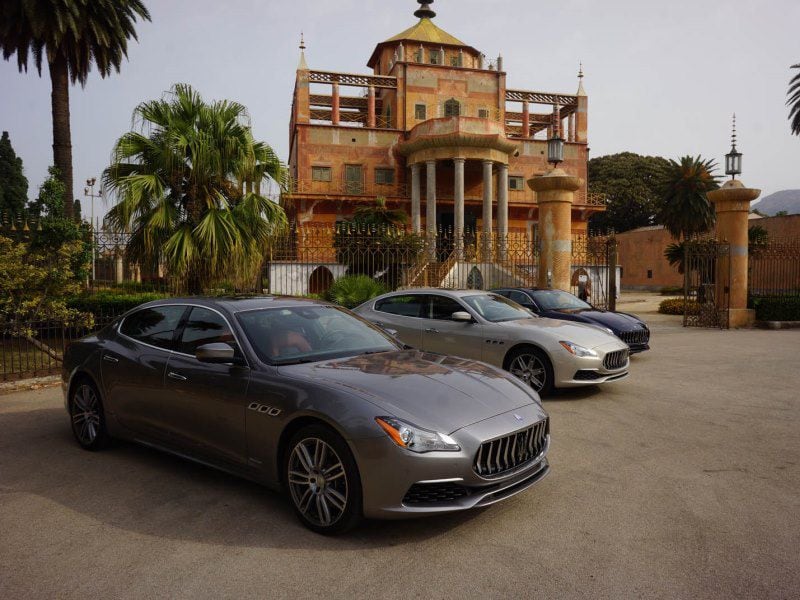
Maserati’s Ferrari Powertrains
Both of the Quattroporte engines are assembled in Maranello by Ferrari. The fact that these powerplants are built alongside the most famous engines in the world – and built with the same level of exacting care — is arguably the top reason to choose the Quattroporte over its more technologically advanced competitors. The twin-turbocharged 3.8-liter V8, in particular, is a testament to the entire nation of Italy.
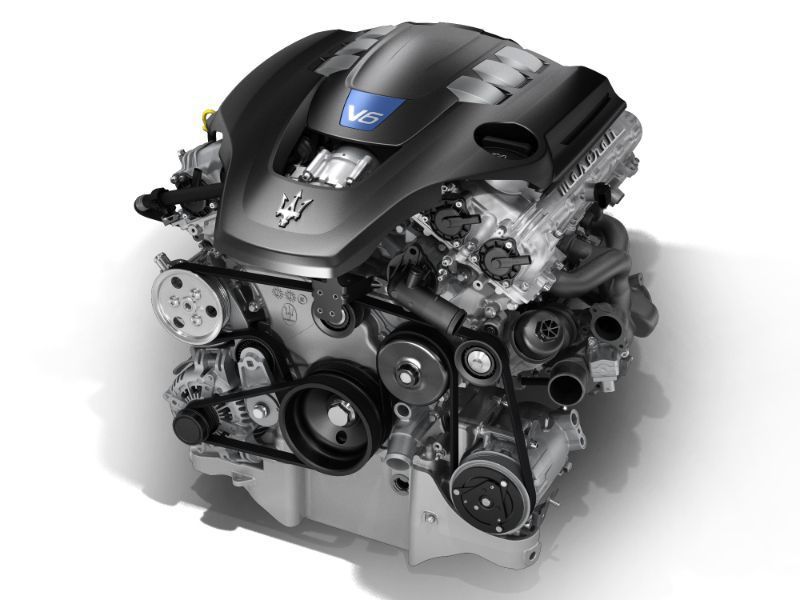
The GranSport
The GranSport emphasizes the Quattroporte’s sportier side with a more aggressive visual package. That starts with the fascia, which acquires larger air intakes and a matte-black bumper, a visual cue that’s matched with similar matte side skirts and a black extractor in the rear. There are larger 21-in. wheels and sharp-looking red brake calipers, plus a rear wing.
The interior abounds with carbon-fiber surfacing throughout, complemented by aluminum paddle shifters and stainless steel sport pedals. You can choose a carbon-fiber steering wheel, or one covered in leather. According to Maserati, the GranSport with its 3.0-liter twin-turbo V-6 has an impressive 178-mph ceiling, and it can rocket to 100 km/h (62 mph) in under 5 seconds.
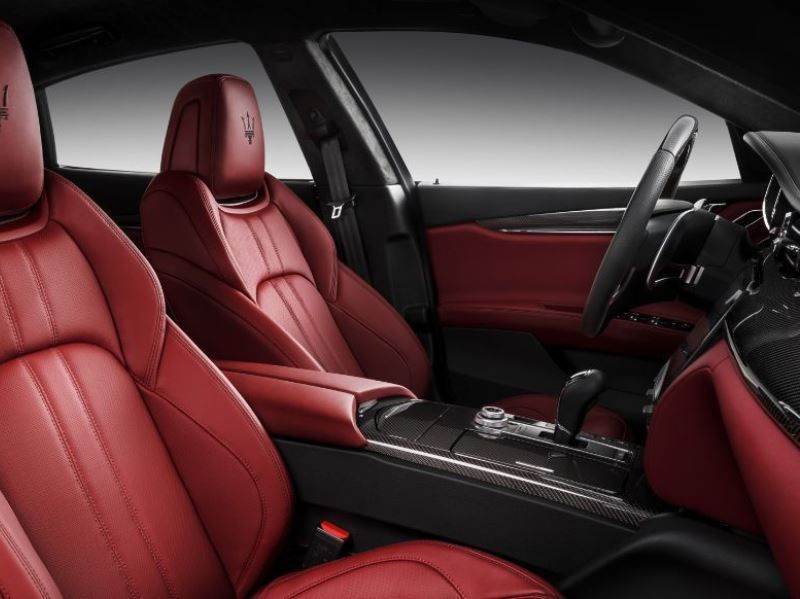
The GranLusso
What the GranSport is to sportiness, the GranLusso is to opulence. Beautiful appointments like Radica wood across the dash (and even on the steering wheel) elevate the Quattroporte’s luxury standing. The most noteworthy option is the Ermenegildo Zegna Edition, which sees the renowned textile masters upholster their gray silk onto the doors, across the seats, throughout the headliner and even on the sun visors. It is a rare material in the automotive space, and adds an unexpected (Italian) touch to a cabin that could use as many fine appointments as it can muster to offset some switches and buttons you can find on the Chrysler 300. Flip down the sun visor, and a “Ermenegildo Zegna exclusively for Maserati” label can be found stitched next to the mirror.
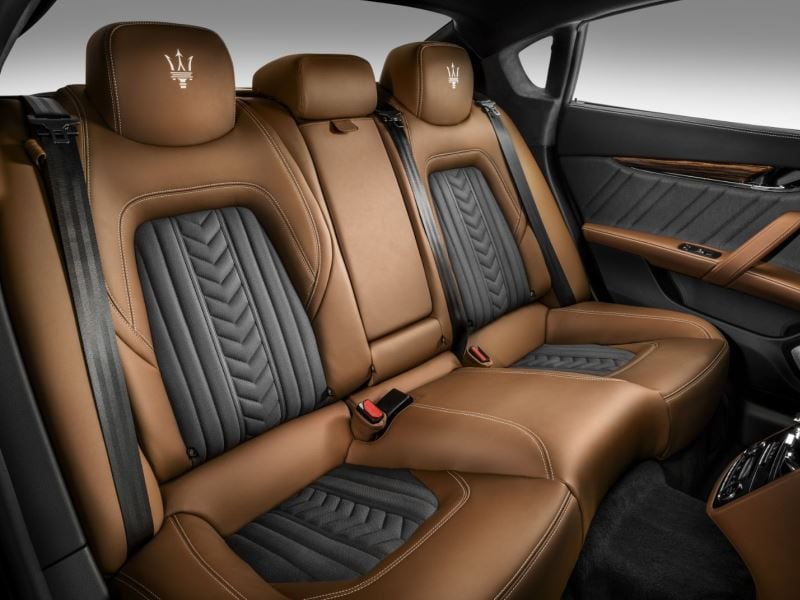
The Almighty GTS
At the heart of the GTS lies the 3.8-liter V8, a Ferrari-built powerplant that can propel the super sedan to 100 km/h (62 mph) in 4.7 seconds and to a top speed of 195 mph. Despite the sporty touches of the GranSport and the luxury appointments of the GranLusso, these Quattroportes still fall short of the technology and luxury found in their German rivals. The GTS is where Maserati makes its strongest argument that its 4-door super sedan can hold serve. Its steering is highly precise, and the handling unlike anything else in its class. This is above all a driver’s vehicle, not one for those who prefer to be chauffeured. Performance-wise, the GTS is matched by the $180,000-plus Panamera Turbo S, and not even the Porsche can equal the angry baritone climax that is summoned forth from the GTS’s quad exhaust ports. It is Italian opera at its most dramatic. Throw in beautiful Erable wood trim and Maserati’s saddle leather interior, and you have one of the most special vehicles in a crowded segment.
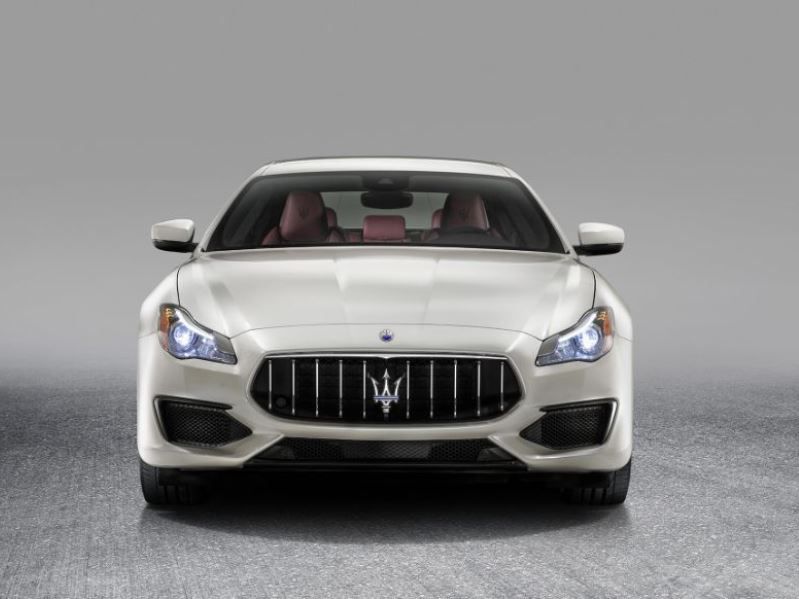
Improved Aero
Maserati has updated the Quattroporte with several features and sheetmetal adjustments to improve its overall aerodynamics by 10 percent. This is accomplished via a new front end (influenced by the Levante SUV), new bumpers, under-carriage plates and a rear diffuser. Like the Levante, the Quattroporte has a new active air shutter behind the grille that can open and close depending on need. If the engine runs hot, the shutters open for cooling. If all is kosher (and/or the ambient temperature is cool or cold), the shutters close to improve aero and therefore fuel efficiency.
The bottom line? The Quattroporte GTS’s top speed is bumped up 3 mph, to 195 mph. That’s faster than everything in its segment, including the Porsche Panamera Turbo S.
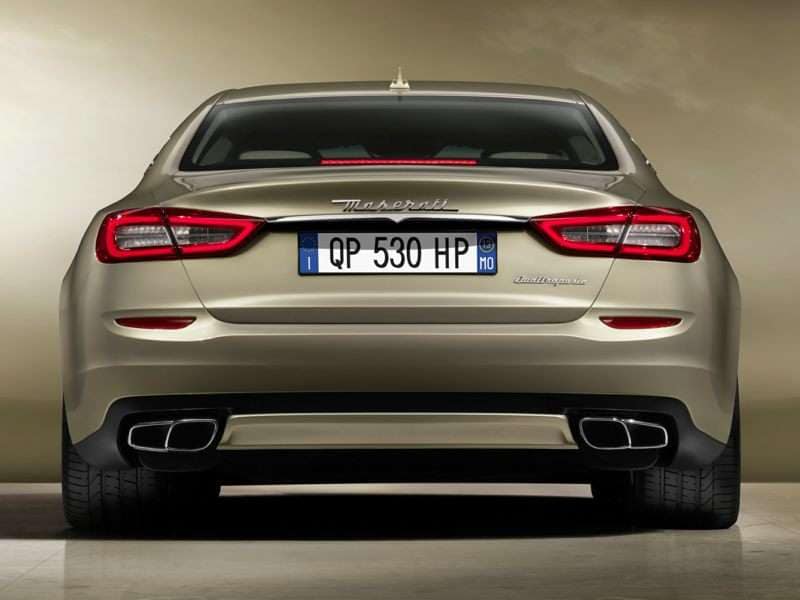
Exterior Design
Since its inception, the Maserati Quattroporte has always been one of the most lust-worthy vehicles in its segment, loaded with what journos in the automotive space dub “Italian passion.” If it weren’t for its voluptuous curves, maw-like grille and athletic proportions, the Quattroporte would just be another luxury sedan. The 2017 model doesn’t change too much visually from the second-generation 2012 car, but it does adopt a new grille with vertical chrome bars inspired by the Alfieri concept car. All told, the styling tweaks lend the nose a sharper appearance. The Quattroporte is still one of the best looking cars in the luxury flagship arena.

Technology Upgrades
The cabin is most improved via an updated 8.4-inch touchscreen dominating the middle of the dash, its definition upped to 800×600 pixels (from 640×480). There are also loads of new driver-assistance systems that have become requisite: adaptive cruise control, lane-departure warning, emergency braking, and so on. One of the major complaints of the second-gen Quattroporte — road noise — has been addressed via reinforced glass said to make the cabin quieter (all the better to hear the Bowers & Wilkins sound system). The MMI has also been improved because of that large touchscreen, through which the driver accesses everything. With the new MMI comes Android Auto and Apple CarPlay, and a customizable app organization ability featuring “drag & drop” display configuration.
Perhaps most innovative is Maserati’s new ergonomic “double rotary knob” on the center console. This dual-height dial (one smaller dial sitting atop another) is quite groundbreaking, letting you dial through radio channels while simultaneously adjusting the volume (and other controls). It is intuitive and effortless, and should be quickly imitated by competitors. It is one of those rare innovations usually made by Audi or Mercedes, and seems inevitable in hindsight.
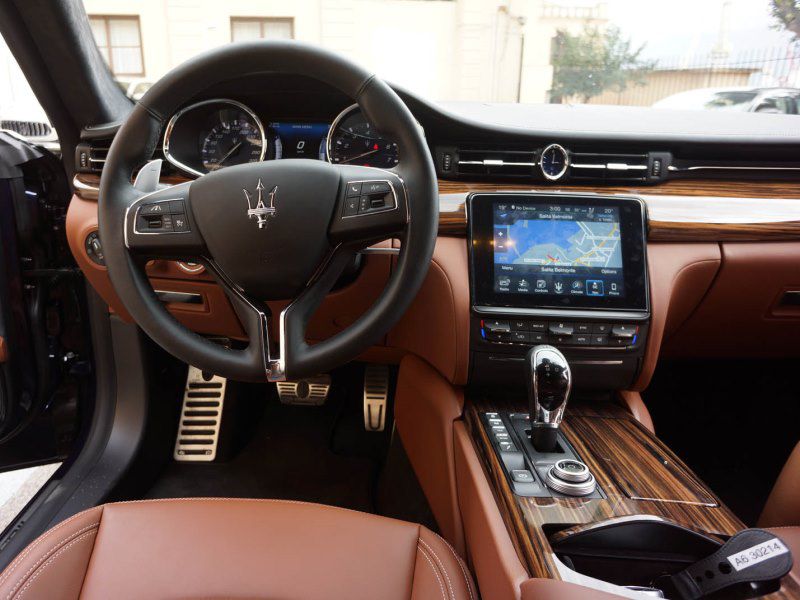
Luxury Competition
Competition for the Quattroporte is brutal, as it competes in the automotive world’s most heavily armed segment when it comes to technology and luxury. The Mercedes-Benz S-Class rules this world with an iron fist, selling more cars than nearly every other brand combined. The BMW 7 Series takes second, with merciless competition also coming from the Audi A8, Jaguar XJ, Porsche Panamera, Cadillac CT6 and even the Aston Martin Rapide at the top of the price level.
It’s impossible to make a rational argument that the Quattroporte can compete with its German competitors in technology. If electronic wizardry is what you’re looking for in a flagship sedan, look elsewhere. And if you prefer to be chauffeured, look elsewhere as well. Most of the other vehicles put a huge premium on the “executive seat” (the rear seat behind the passenger), with removable tablets, reclining thrones, “hot stone” massages and more. The Quattroporte does not.
But if you want a full-size executive sedan that you will enjoy driving, that will challenge you and keep you engaged on spirited drives, then the 2016 Maserati Quattroporte is well worthy of investigation — especially in GTS trim.
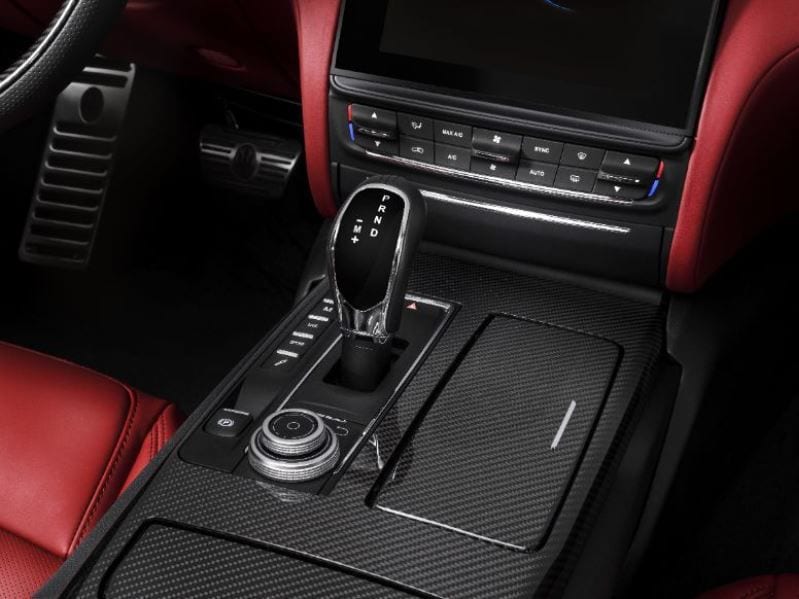
To Ghibli Or Not To Be
Besides fierce competition from all of its NATO allies, the Quattroporte also has to look out for cannibalized sales from the recently released Ghibli sedan. Designed to compete with the likes of the BMW 5 Series, Audi A6, and Jaguar XF, the new Maserati Ghibli offers a “value” proposition that those other brands cannot: own a Maserati, not the same brand your assistant might own (gasp!). Thing is, the Ghibli offers much of what the Quattroporte offers, only in a slighter smaller — and more affordable — package. If you’re not opting for the top-level GTS, it’s hard to argue to choose a Quattroporte when you could get into a car with very similar sheet metal, interior fit-and-finish and gorgeous V-6 purr for significantly less coin (the Ghibli starts at $70,000, the Quattroporte at over $100,000). The interior luxury of the Quattroporte is markedly better, but when you can get the same design language and brand equity for 30 percent less, it’s tough to ignore.
